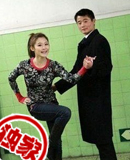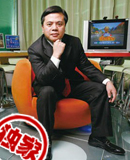工商管理硕士研究生入学考试英语模拟试题之二(5)
Text 4
“I want to criticize the social system, and to show it at work, at its most intense。” Virginia Woolf’s provocative statement about her intentions in writing Mrs. Dalloway has regularly been ignored by the critics, since it highlights an aspect of her literary interests very different from the traditional picture of the “poetic” novelist concerned with examining states of reverie and vision and with following the intricate pathways of individual consciousness. But Virginia Woolf was a realistic as well as a poetic novelist, a satirist and social critic as well as a visionary: literary critics’ cavalier dismissal of Woolf’s social vision will not withstand scrutiny。
In her novels, Woolf is deeply engaged by the questions of how individuals are shaped (or deformed) by their social environments, how historical forces impinge on people’s lives, how class, wealth, and gender help to determine people’s fates. Most of her novels are rooted in a realistically rendered social setting and in a precise historical time。
Woolf’s focus on society has not been generally recognized because of her intense antipathy to propaganda in art. The pictures of reformers in her novels are usually satiric or sharply critical. Even when Woolf is fundamentally sympathetic to their causes, she portrays people anxious to reform their society and possessed of a message or program as arrogant or dishonest, unaware of how their political ideas serve their own psychological needs. (Her Writer’s Diary notes: “the only honest people are the artists,” whereas “these social reformers and philanthropists… harbor… discreditable desires under the disguise of loving their kind…”) Woolf detested what she called “preaching” in fiction, too, and criticized novelist D. H. Lawrence (among others) for working by this method。
Woolf’s own social criticism is expressed in the language of observation rather than in direct commentary, since for her, fiction is a contemplative, not an active art. She describes phenomena and provides materials for a judgment about society and social issues; it is the reader’s work to put the observations together and understand the coherent point of view behind them. As a moralist, Woolf works by indirection, subtly undermining officially accepted mores, mocking, suggesting, calling into question, rather than asserting, advocating, bearing witness: hers is the satirist’s art。
Woolf’s literary models were acute social observers like Chekhov and Chaucer. As she put it in The Common Reader, “It is safe to say that not a single law has been framed or one stone set upon another because of anything Chaucer said or wrote; and yet, as we read him, we are absorbing morality at every pore。” Like Chaucer, Woolf chose to understand as well as to judge, to know her society root and branch — a decision crucial in order to produce art rather than polemic.36. Which of the following would be the most appropriate title for the text? [A] Poetry and Satire as Influences on the Novels of Virginia Woolf. [B] Virginia Woolf: Critic and Commentator on the Twentieth-Century Novel. [C] Trends in Contemporary Reform Movements as a Key to Understanding Virginia Woolf’s Novels. [D] Virginia Woolf’s Novels: Critical Reflections on the Individual and on Society。
37. In the first paragraph of the text, the author’s attitude toward the literary critics mentioned can best be described as [A] disparaging. [B] ironic. [C] facetious. [D] skeptical but resigned.38. It can be inferred from the text that Woolf chose Chaucer as a literary example because she believed that [A] Chaucer was the first English author to focus on society as a whole as well as on individual characters. [B] Chaucer was an honest and forthright author, whereas novelists like D. H. Lawrence did not sincerely wish to change society. [C] Chaucer was more concerned with understanding his society than with calling its accepted mores into question. [D] Chaucer’s writing was greatly, if subtly, effective in influencing the moral attitudes of his readers.39. It can be inferred from the text that the most probable reason Woolf realistically described the social setting in the majority of her novels was that she [A] was aware that contemporary literary critics considered the novel to be the most realistic of literary genres. [B] was interested in the effect of a person’s social milieu on his or her character and actions. [C] needed to be as attentive to detail as possible in her novels in order to support the arguments she advanced in them. [D] wanted to show that a painstaking fidelity in the representation of reality did not in any way hamper the artist.40. Which of the following phrases best expresses the sense of the word “contemplative” as it is used in line 2, paragraph 4 of the text? [A] Gradually elucidating the rational structures underlying accepted mores. [B] Reflecting on issues in society without prejudice or emotional commitment. [C] Avoiding the aggressive assertion of the author’s perspective to the exclusion of the reader’s judgment. [D] Conveying a broad view of society as a whole rather than focusing on an isolated individual consciousness。
Part B
Directions:
Read the following text and answer question by deciding each of the statements after the text is True or False. Choose T if the statement is true or F if the statement is not true. Mark your answers on ANSWER SHEET 1. (10 points)
If you were to examine the birth certificates of every soccer player in 2006’s World Cup tournament, you would most likely find a noteworthy quirk: elite soccer players are more likely to have been born in the earlier months of the year than in the later months. If you then examined the European national youth teams that feed the World Cup and professional ranks, you would find this strange phenomenon to be even more pronounced。
What might account for this strange phenomenon? Here are a few guesses: a) certain astrological signs confer superior soccer skills; b) winter-born babies tend to have higher oxygen capacity, which increases soccer stamina; c) soccer-mad parents are more likely to conceive children in springtime, at the annual peak of soccer mania; d) none of the above。
Anders Ericsson, a 58-year-old psychology professor at Florida State University, says he believes strongly in “none of the above。” Ericsson grew up in Sweden, and studied nuclear engineering until he realized he would have more opportunity to conduct his own research if he switched to psychology. His first experiment, nearly 30 years ago, involved memory: training a person to hear and then repeat a random series of numbers. “With the first subject, after about 20 hours of training, his digit span had risen from 7 to 20,” Ericsson recalls. “He kept improving, and after about 200 hours of training he had risen to over 80 numbers。”
This success, coupled with later research showing that memory itself is not genetically determined, led Ericsson to conclude that the act of memorizing is more of a cognitive exercise than an intuitive one. In other words, whatever inborn differences two people may exhibit in their abilities to memorize, those differences are swamped by how well each person “encodes” the information. And the best way to learn how to encode information meaningfully, Ericsson determined, was a process known as deliberate practice. Deliberate practice entails more than simply repeating a task. Rather, it involves setting specific goals, obtaining immediate feedback and concentrating as much on technique as on outcome。
Ericsson and his colleagues have thus taken to studying expert performers in a wide range of pursuits, including soccer. They gather all the data they can, not just performance statistics and biographical details but also the results of their own laboratory experiments with high achievers. Their work makes a rather startling assertion: the trait we commonly call talent is highly overrated. Or, put another way, expert performers – whether in memory or surgery, ballet or computer programming – are nearly always made, not born。
41. The birthday phenomenon found among soccer players is mentioned to explain why some soccer teams play better than others。
42. The word “mania” (Line 4, Paragraph 2) most probably means fan。
43. According to Ericsson, good memory depends on meaningful processing of information。
44. Ericsson and his colleagues believe that high achievers owe their success mostly to nurture。
45. The text tries to convey “One reaps what one sows。”
Section Ⅲ Translation
Directions:
In this section there is a paragraph in English .Translate it into Chinese and write your translation on ANSWER SHEET 2 (15 points)。
Genetically speaking, there are advantages to avoiding substantial height. During childbirth, larger babies have more difficulty passing through the birth canal. Moreover, even though humans have been upright for millions of years, our feet and back continue to struggle with bipedal posture and cannot easily withstand repeated strain imposed by oversize limbs. “There are some real constraints that are set by the genetic architecture of the individual organism,” says anthropologist William Leonard of Northwestern University。
Genetic maximums can change, but don’t expect this to happen soon. Claire C. Gordon, senior anthropologist at the Army Research Center in Natick, Mass., ensures that 90 percent of the uniforms and workstations fit recruits without alteration. She says that, unlike those for basketball, the length of military uniforms has not changed for some time. And if you need to predict human height in the near future to design a piece of equipment, Gordon says that by and large, “you could use today’s data and feel fairly confident。”
Section Ⅳ Writing
Part A
Directions:
Read the following Chinese text and write an abstract of it in 80-100 English words. You should write your abstract on ANSWER SHEET 2 (10 points)
规划股份投资
我们周围不乏情报贩子,向人们提供迅速发财致富的机遇。但是,如果你是一个认真的私人投资者,就把拉斯韦加斯的心态留给那些有钱可供挥霍的人。认真的投资者需要一份正规的投资组合表 -- 一种计划很周密的投资选择,包括你的投资结构和明确的目标。但是, 一个股票市场的新手又如何能做到这一点呢?
如果你去向5位有威望的股票经纪人咨询,询问你应该如何使用你的资金,你可能得到5种不同的答复,即便你提供了有关于你的年龄、家庭、财源和你想从投资中获得好处的信息。这是个道德问题吗?没有一种完全“正确”的方法来排列这种投资组合,然而,却毫无疑问地有几种错误的方法。可以相信5位经纪人中不会有人建议你把全部(或一部份)资金投入佩里威格斯公司。
那么你该怎么做呢?我们假定你已把基本情况弄清楚了,如抵押贷款、养老金、保险金和动用现金储备的机会。然后,你一定要建立起自己的目标。这里一方面是个所处的环境,另一方面是个心理学的问题。
比如说,如果你年纪较大,你从重大投资损失中恢复过来的时间就较少,你就很希望能够提高你的养老金收入。因此,你的首要任务就是保护你的资金和引发额外的收入。在这种情况下,你大概想制定一份包括某些股份(但不是风险很大的股份)的投资组合,同时还有高度可靠的证券、现金储蓄,可能还有可换证券,或分割资本投资信托公司的所得股。
如果你年轻一些,并且经济状况可靠,你可能会采取一种积极进取的方式 -- 你必须性格开朗,不会因股票价格的浮动而夜不能眠。如果你觉得你的情况是这样的话,你可在投资组合中包括几项有令人陶醉的增值前景的增长股,和其他比较平淡的投资项目放在一起。一旦你的投资组合中包括几项有令人陶醉的增值前景的增长股,和其他比较平淡的投资项目放在一起。一旦你的投资目标确立以后,你就可以决定你的钱投向何处。这里的指导原则是:分散你的投资风险。如果你把所有资金投入佩里威格斯国际公司,你就把自己当成了命运的人质。
Part B
Directions:
Study the following drawing carefully and write an essay in which you should
describe the drawing,
interpret its meaning, and
suggest counter-measures。
You should write about 150 words neatly on ANSWER SHEET 2(15 points)
。
特别说明:由于各方面情况的不断调整与变化,新浪网所提供的所有考试信息仅供参考,敬请考生以权威部门公布的正式信息为准。
网友评论
更多关于 考研 MBA 的新闻
- 专家指导:MBA学子毕业后的三大种职业选择2009-11-11 17:54:04
- 备考指导:MBA全国联考英语面试经典35题2009-11-11 17:46:10
- 备考资料:MBA联考管理模拟习题2009-11-09 23:52:53
- 备考资料:MBA数学重点模拟习题2009-11-09 23:45:13
- 2010年MBA备考资料:英语模拟题2009-11-09 23:38:44
- 2010年MBA备考资料:逻辑模拟试题2009-11-09 23:35:11
- MBA模拟试题:逻辑模拟测试题一2009-11-09 23:31:52






